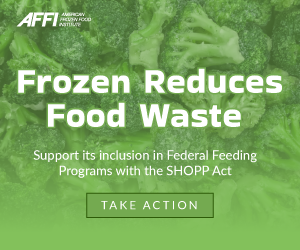By all accounts, the foodservice industry is roaring back to life as vaccination distribution spreads and dine-in restrictions are lifted. Many restaurant operators are reporting same-store sales exceeding pre-pandemic levels, as off-premise orders remain strong while pent-up demand drives the dine-in surge. In addition, education is going back to live classroom instruction and consumers are traveling again; these drive optimism for the important foodservice segments of education as well as travel and leisure.
Despite this strong industry recovery, there is concern that the delta variant will rain on foodservice’s parade. At the time of this writing, there has been some industry slowing, but initial indications are that the industry will continue to show very strong year-over-year growth in 2021.
The surge in business does not come without its own baggage. First of all, significant headwinds remain as the restaurant industry struggles to fill jobs to allow them to meet this booming demand. The biggest challenge facing operators in this current recovery period is not only finding qualified staff but finding staff willing to work. There are numerous other factors impacting employment in the restaurant industry not only during the post-pandemic recovery but well into the future. Workforce demographics, health concerns, federal unemployment subsidies, and workplace culture are all major hurdles for finding foodservice workers.
Well-publicized supply chain problems continue in almost all industry verticals and foodservice has not been spared. Categories from chicken to ribs to disposables and even soups and condiments have experienced temporary or long-lasting shortages on a regional or national level. This is certainly having an impact on the business in reaching its overall potential as consumers return to foodservice and many products aren’t available or are priced too high.
The current business situation offers significant opportunities for frozen foods. As operators struggle with labor, many frozen food products offer advantages of being value-added—those that don’t require significant training nor expertise to prepare. These convenience products are a godsend to operators struggling with inexperienced employees or a short-staffed situation. From a supply chain perspective, the longer shelf life offered by frozen foods versus fresh foods gives operators flexibility to purchase opportunistically in larger quantities when pricing and the supply situation is favorable.
It may take a few years for the foodservice industry to return to some sense of normalcy. But frozen foods can continue to be an important part of its journey back. To hear more from Joe Pawlak, Managing Principal at Technomic attend his session “State of the Foodservice Industry,” during AFFI’s Leadership Conference on Tuesday, November 9 from 1:15-2 p.m. (EDT) which is generously sponsored by Simplot.




